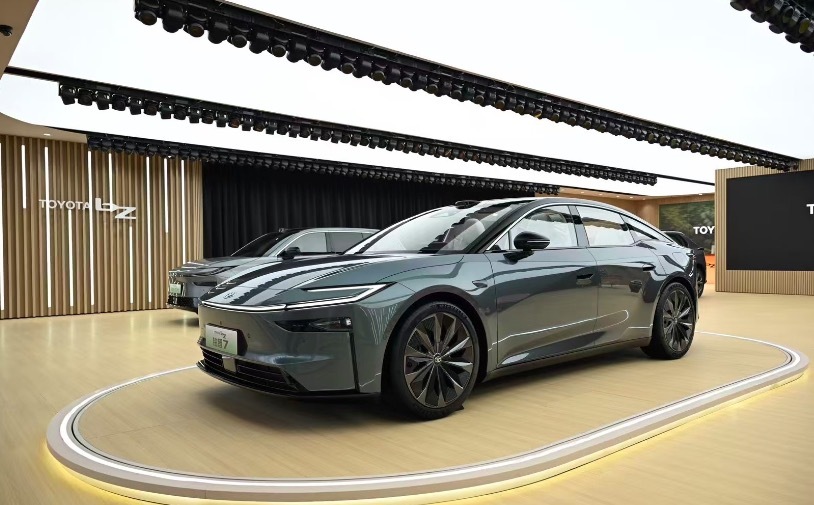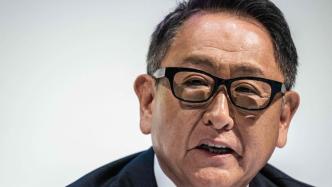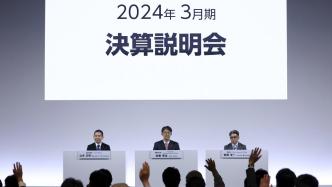
Toyota's booth at the 2025 Shanghai Auto Show can be said to be a "textbook" for localized R&D of foreign-funded enterprises. From the world's first Platinum 7 sedan to the renewed and upgraded bZ brand worldview, from the implementation of the ONE R&D system to the practice of the RCE (China Chief Engineer) system, this multinational automaker is transforming the innovative potential of the Chinese market into a new engine to drive global evolution with a "blade inward" attitude of change. "Being global, more Chinese" is not just a slogan. Toyota's Chinese-style inheritance and evolution are being gradually implemented.
The Platinum 7 sedan in the center of the booth carries the milestone significance of Toyota's localized research and development. This BEV flagship model jointly developed by GAC Group, GAC Toyota and IEM by TOYOTA is the first to deeply integrate Toyota's global quality standards with the Chinese-style intelligent ecology of the Hongmeng cockpit.

The new car's decision-making response efficiency in complex urban road conditions is improved. Behind this is the in-depth deconstruction of local traffic scenarios by the Chinese engineering team under the RCE system: from the travel trajectories of food delivery riders to high-incidence areas of "ghost poking" accidents, from the redundant design of sensors in heavy rain weather to the optimization of battery thermal management in low-temperature environments. Every technical detail is inseparable from the genes of the Chinese market.
This research and development philosophy of "defining the world with China" is explained in Toyota's new bZ brand worldview. Toyota has jumped out of the framework of pure technology competition and turned to build a trinity value system of "peace of mind, safety, and advancement". The flowing wood grain brand color on the background wall of the booth is not only a visual expression of the concept of environmental protection, but also a metaphor for Toyota's insight into the needs of Chinese consumers. In the wave of intelligence, safety is always the bottom line that cannot be compromised, and advanced technology must serve people's real experience.
The implementation of the ONE R&D system marks the entry of Toyota's localization strategy into the deep water zone. By integrating IEM by TOYOTA with the R&D centers of FAW Toyota, GAC Toyota, and BYD Toyota into the "China Innovation Community", Toyota has broken the common "headquarter-region" vertical structure of multinational automakers and built a flat and agile R&D network. In this system, BYD's battery engineers, GAC's smart cockpit experts, and Toyota's chassis tuning team can share data in real time and work together to solve problems.
Therefore, the special-shaped steering wheel design of bZ5/Bozhi 3X not only retains Toyota's consistent control texture, but also incorporates Chinese users' expectations for intelligent interaction.
On the other side of the booth, two scenario-based modification solutions, Active and Urban, show Toyota's interpretation of "mobile freedom". The Active series transforms the car into a camping artifact, with designs such as the roof expansion platform and the folding kitchen on the side of the car, precisely matching the outdoor life craze of the Chinese middle class; the Urban series injects Akio Toyoda's favorite "GR spirit" into the urban commuting scene through elements such as the low-lying body and cyberpunk lighting. These seemingly "unprofessional" attempts are actually Toyota's keen capture of the evolution of Chinese automotive culture.

This ecological thinking has reached its peak in Toyota's "multi-path new energy technology" strategy. At the booth, the hydrogen fuel cell vehicle Mirai appeared on the same stage as pure electric, hybrid, and plug-in hybrid models, forming Toyota's unique "technology matrix." The seemingly "conservative" choice of technical route actually implies wisdom: in the western market where charging infrastructure has not yet been fully covered, hybrid technology is still a realistic option for reducing carbon emissions; and in leading regions such as the Yangtze River Delta and the Pearl River Delta, pure electric and hydrogen energy have become parallel solutions for future travel. Toyota China executives said frankly: "We don't make either-or choices, but provide solutions tailored to local conditions."
From the innovation of young engineers under the RCE system to the humanistic care in the bZ brand's worldview; from the democratization of technology under the ONE R&D system to the ecological thinking in scenario-based modification solutions, Toyota is carrying out a self-reform in the Chinese market.

